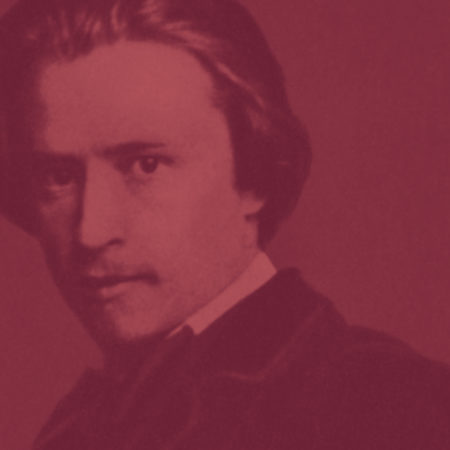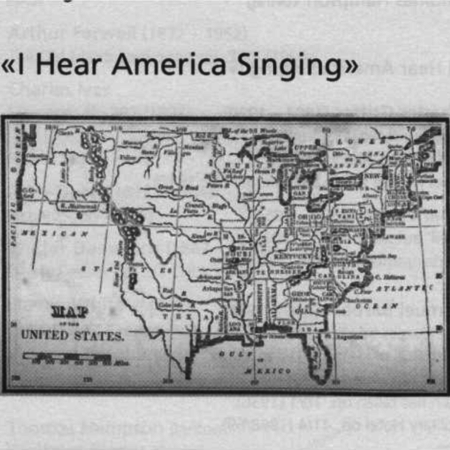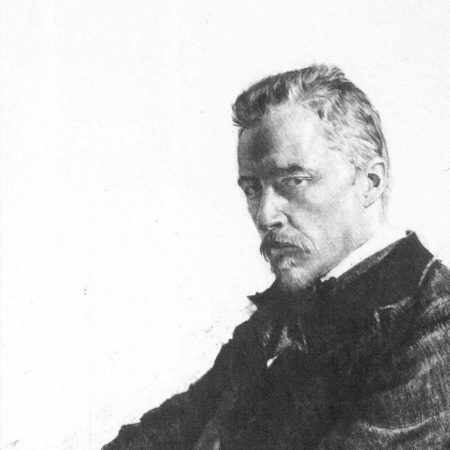An Essay by Susan Youens
Courtesy of the Internationale Hugo-Wolf-Akademie
With the launch of the series “The Complete Hugo Wolf” (Der ganze Hugo Wolf) in March 2016, the International Hugo Wolf Academy (Stuttgart, Germany) began an ambitious, multi-year endeavor to perform all of the songs (Lieder) of composer Hugo Wolf. By December 2019, with the tenth concert of the series, more than 200 of Wolf’s nearly 300 songs had received a performance. The series, which was conceived and planned by Brazilian pianist Marcelo Amaral, will come to a close in 2022. In addition to a live moderator, each concert is accompanied by a detailed program booklet featuring essays and commentary on the life and songs of Hugo Wolf by the renowned American musicologist Susan Youens. Youens works in the English language, and this is the first time that such texts are also translated into German. All concerts are recorded and select individual videos appear on YouTube and on the website of the International Hugo Wolf Academy (https://www.ihwa.de).
The Lieder of Hugo Wolf (1860-1903): Programm I
Frühlingszeit – Leidenschaft – Abendlieder – Die Märchenwelt
Essay by Susan Youens
Frühlingszeit
Hugo Wolf has a unique place in the history of 19th-century song. Acutely aware of following in the wake of such songwriting giants as Schubert and Schumann and bowed down (for a while) by the weight of his own conflicted Wagner-worship, he found his way to a voice of his own. What we find in his songs is a merger of Schubertian formal containment with a post-Wagnerian harmonic language all Wolf’s own. When he first came to Vienna in 1875 to study at the Conservatory, he would experiment at his aunt’s parlor organ with novel ways of getting from one key to the next; expelled from the conservatory in 1877 (but he considered the training old-fashioned), he became an autodidact, imitating Schumann, Liszt, and Wagner until he could fly on his own. When he began composing in earnest, he was able to penetrate the depths of some of Germany’s most sprofound poetry—his preference was for the verse of earlier generations, not the works of his own generation. In little more than twenty years, he created a repertory of songs unlike anyone else’s, most of them contained in anthologies that each focus on a single poet or collection of folk poems.
Rather than a chronological march through Wolf’s songs or going from one songbook to the next, our performers are literally mixing it up, roaming about in Wolf’s oeuvre for thematic groups. We begin with that most delightful of themes—the coming of spring—and one of Wolf’s best-known songs: Er ist’s to words by Eduard Mörike. It was Wolf’s rediscovery of Mörike’s poetry in February 1888 that impelled the third “miracle year” of the Lied (Schubert in 1815 and Schumann in 1840 were the first and second). Mörike drew Wolf’s attention for his many-sidedness and slipperiness of categorization: he is neither wholly Romantic, neo-classical, Biedermeier-idyllic or folk-like, although he partakes on occasion of all of the above. Like Mozart, whose music Mörike revered, his poems hint at dark, daemonic sources of power beneath elegant surfaces. But in this work, the poet hears from afar the impending arrival of spring, and Wolf sends soft, fluttering ribbons of sound through the air until the song explodes in joy at spring’s presence.
But spring can also be deadly, as we discover in Zitronenfalter im April. The brimstone butterfly—the male of the species is a distinctive bright yellow color—is often the earliest to appear each spring. This one has been wakened too early; if a maiden cannot give him a drop of sweetness, he must die. The symbolism of being awakened to Eros too soon is something one finds elsewhere in Mörike, who fell disastrously in love at age nineteen with an enigmatic and beautiful woman named Maria Meyer, the daughter of a Swiss prostitute. In Wolf’s beautifully imaginative piano part, we hear the delicate, enervated flapping of tiny wings, crystalline treble figures, chiming sounds—and all the sweetness and vulnerability of a wounded creature.
After completing his Mörike songs, Wolf then turned first to the great Romantic poet Joseph von Eichendorff for a smaller songbook and then to Goethe for another large anthology. Goethe’s late lyric poem Frühling übers Jahr (sketched in 1816, published in 1820) is both spring song and love song at once: the flowers in their glory may only push up through the ground in spring, but his beloved blossoms all year round. Again, delicate chiming sounds in the high treble bespeak the loveliness of early spring, and the nodding snowdrops of the poem might well have inspired the piano figuration of this song.
Mörike is justly famed for recreating in his poems those acts of mind which lead to an altered understanding of life’s largest matters (creativity, Time, memory), and Im Frühling is one of his greatest poems. The solitary poetic persona’s thoughts “of this and that” in the midst of Nature’s springtime beauty seem random, but they lead to recognition that the past can never be reclaimed; only glimmers of what is irretrievably gone are in poetry’s power to recapture. Wolf weaves quasi-meandering layers of voices in the piano, voices which are actually directed inexorably to the exquisite block-chordal acclamation in the final phrase: “Alte unnennbare Tage!”
Leidenschaft
In Mörike, desire is sweetest when it is a distillate of yearning beyond fulfillment and therefore distanced from tragedy, when its rapture cannot ever change to pain. In Der Gärtner, a princess is forever loved from afar by an ardent young gardener in her employ. Mörike takes his model from Eichendorff and Wolf from Schumann’s earlier setting of the same poem, and both expunge any darkness from their predecessors’ creations. Those who accuse Wolf (wrongly) of not creating tuneful melodies will learn otherwise from this, one of his most enchanting songs.
Der Knabe und das Immlein begins as if this were a folk poem (“In the vineyard on the heights”), then veers into strangeness. No actual house lacks doors and windows or knows boredom: this “Häuslein” is symbolic of a young girl almost but not quite sexually mature. In the sweetheart’s “garden,” there stands a beehive from which honey flows: the vaginal garden, clitoral beehive, and honey of sexual secretions. Mörike and Wolf both understood the beauty of desire in its early days, and Wolf’s settings of stanzas 3-6 reflects this rapture and excitement.
Lied eines Verliebten belongs with the Rollenlieder in the Mörike anthology, with their thumbnail characterizations of stock figures such as old women, hunters, and young lovers. A young man lies awake in the darkness before dawn (this is the “Mörike hour,” the time when the mind is most vulnerable to psychic torment); if he were a fisherman or a miller, he laments, he would now be at work and happy, but alas, he lies in bed with thoughts of his ungrateful sweetheart plaguing him. Wolf fills the right hand part with thrumming chords expressive of restlessness and fervor alike; in the typically Wolfian “dying away” postlude, we hear the lad at last falling asleep—until the very loud chord at song’s end. One can almost hear the composer’s “Ha!” in that final fillip: Wolf remade humor in song.
The poverty-stricken student-poet of Der verzweifelte Liebhaber escapes his cares in multiple fantasies of being a dragon and flying with the most beautiful maiden in the world (more accommodating than his sweetheart), of being a mighty warrior, and finally, of contented sleep. The imaginary flights from place to place impelled restless harmonic shifts to distant tonal realms from Wolf.
The poems both by famous Spanish writers and anonymous folk poets come from Paul Heyse’s and Emanuel Geibel’s (1815-1884) poetic anthology of 1852, a source popular with 19th-century composers. Here, a woman sings In dem Schatten meiner Locken with her lover asleep at her breast and shadowed by her long hair. The pair has made love (the wind of passion has tousled her locks) a short time before and will do so again to the same script on his part. The hint of teasing ennui adds to the evident eroticism of this scenario the spice of ambiguity that so attracted the psychologically-inclined Wolf, a resident of Freud’s Vienna.
Eight years after the Spanish Songbook, Paul Heyse brought out another volume of translated folk poems, this time in Italian, and Wolf set 46 of them to music in two installments (1790-1791 and 1796), with an agonizing period of compositional block in between. In these tiny songs, we alternate between largely worshipful works in a male voice and often teasing or comic songs in a woman’s voice, with certain songs not gender-specific. In Wie viele Zeit verlor’ ich, a man “laments”—he doesn’t really mean it—that if he had worshipped God instead of the beloved, he would have a place in Paradise. We hear him practically swoon with desire in the piano postlude. In Wie lange schon war immer mein Verlangen, a woman swoons in Wagnerian desire for her peaches-and-cream milksop of a lover, who minces onto the musical stage in the piano postlude and plays a ridiculous and inept solo on the piano-violin. Wolf’s comedic songs often, as here, have a satiric sharp edge: impelled by Wolf’s parodistic music, we laugh, but the “send-up” of bad performers and the adulation they receive is fueled by anger.
One of the most startling poems Mörike ever wrote was Erstes Liebeslied eines Mädchens: Wolf cited it as exemplifying the “daemonic truth,” something “written with blood,” he most admired in Mörike. The poet flirts with the boundaries between pornography and high poetic art; 60 years later, a composer living covertly outside the bounds of sexual convention gave the poem his own turn-of-century twist. Here, a woman undergoes deflowering by someone we never see or know: he is a phallus only (this could be Mörike’s symbolic language for a poet raped by a Muse), and what begins consensually becomes violent by the end. Wolf turns these words into a waltz on speed, with allusions to Tristan-esque desire and filled with graphic sexualized panting, strokes, and plunges.
Abendlieder
The Swiss writer Gottfried Keller, most famous for his semi-autobiographical novel Der grüne Heinrich, wrote poetry as well, including Wie glänzt der helle Mond. An old woman, distant from bygone youth and beauty, someone from the working class, gazes at the moon and conjures up a vision of heaven in which she will look in wonder on her newly-white hands. Heavenly music here consists of pure triads in unusual progressions, while a singer on the brink of death would want to see other humble workers in Paradise: St. Peter, squatting by the gate and mending old shoes to a reminiscence from Wagner’s Die Meistersinger von Nürnberg, with its cobbler-poet.
Of all the miniature gems of love in the Italienisches Liederbuch, Heut’ Nacht erhob ich mich is among the sweetest and most affecting. The lover asks “Herz, wohin stürmst du so mit Macht?” (to a dynamic shift from loud to soft and a marvelous harmonic shift from a bright harmony to a warmer, richer, darker chord), and then declares “Nur Euch zu sehn” (to another harmonic progression designed to make our hearts melt). The nuances in this tiny song (a mere eighteen measures) are the essence of Lied composition.
It is no wonder that Wolf was drawn to Eichendorff’s exquisite Verschwiegene Liebe: in the early 1880s, he fell in love with Melanie Köchert, married to the Viennese jeweler Heinrich Köchert. Their affair possibly began in 1884 and endured thereafter; Heinrich found out in 1893 but remained married to Melanie and a friend to Wolf (none of these people were ordinary). No wonder this music is so enchanting. In another of Eichendorff’s nocturnal poems, Nachtzauber, Romantic Nature is made mystical, a place of utmost beauty and enchantment—and an enticement to death for those wounded of heart. When the singer bids us, “Komm, o komm zum stillen Grund,” Wolf’s plunge downwards an octave-and-a-half in the vocal line is bewitching.
Die Märchenwelt
Mörike loved German folklore and balladry; he had a special penchant for Schauerballaden, with Die Geister am Mummelsee among his best. Wolf knew the origin of this poem in Mörike’s shadow-play “Der letzte König von Orplid: Ein Phantasmagorisches Zwischenspiel,” included in this writer’s 1832 novel Maler Nolten. In his youth, Mörike created the mythical island kingdom of Orplid, peopled by fairies, elves, rustics, and a sad king named Ulmon, cursed to unending life and separation from his dead queen Almissa until the gods release him from life. In this ballad, children observe and describe a ghostly funeral procession—this foreshadows the king’s death—into the Mummelsee, a haunted lake in the Black Forest. Wolf, like Mörike, pushes the genre of balladry to its limits in this virtuosic tale.
After such eeriness, we trip the light fantastic in Elfenlied and Nixe Binsefuss. In the first, an elf who hears the night watchman calling the hours cry “Elfe!” wakes up, wonders if he is being summoned, and ventures forth; thinking that a wall with fireflies is a wedding feast that he would quite like to attend, he trips on the hard stones. If the elf is a trifle clumsy, he is also utterly charming, and Wolf creates a scherzo high in the treble register. “Leicht und luftig,” Wolf writes at the start of “Nixe Binsefuss;” we hear the reed fairy skating across the ice in the opening measures (very tricky for the pianist!). If she bears a grudge against the fisherman, she approves of his daughter and plans to give her a “dwarf’s masterpiece” as a wedding gift.
The protective goddess of Orplid is Weyla, who sings a rapt invocation to her realm in Gesang Weylas. Wolf’s music is homage to Schubert’s “Meeresstille,” but without the underlying menace we hear in the earlier song of a becalmed sailor. The goddess’s ecstatic acclamation at the end is unforgettable.
The Pied Piper of Hamelin comes from medieval history and myth; in Goethe’s Der Rattenfänger, he lures children away from their parents, maidens and wives from the path of virtue, by means of irresistible music. Schubert set this poem in August 1815 as an artful imitation of folk song, cheerful, jaunty, and simple, but Wolf understood that music’s power to overwhelm the will and stoke forbidden desires is at issue. This song is an exercise in musical diabolism; you can even hear the devilish creature cracking his whip in the piano introduction, interludes, and postlude.
We end with Der Feuerreiter — on a par with Schubert’s “Erlkönig” as one of the most virtuosic songs ever written. The supernatural “fire-rider” is Mörike’s symbol for the spirit of anarchy, rampaging up and down the countryside and destroying the mills where grain is ground to make life-sustaining bread. Wolf first brings the spectral creature to tumultuous life in music and then sings a haunting dirge over his ashes.
The Author

In Cooperation with
The Lieder of Hugo Wolf (1860-1903): Programm I
Frühlingszeit
(Susan Youens on Frühlingszeit)
Er ist’s – text by Eduard Mörike (1804-1875), 5 May 1888
Zitronenfalter im April – text by Eduard Mörike, 6 March 1888
Frühling übers Jahr – text by Johann Wolfgang von Goethe (1749-1832), 21 December 1888
Im Frühling – text by Eduard Mörike, 8 May 1888
Leidenschaft
(Susan Youens on Leidenschaft)
Der Gärtner – text by Eduard Mörike, 7 March 1888
Der Knabe und das Immlein – text by Eduard Mörike, 22 February 1888
Lied eines Verliebten – text by Eduard Mörike, 14 March 1888
Der verzweifelte Liebhaber – text by Joseph von Eichendorff (1788-1857), 23 September 1888
In dem Schatten meiner Locken – Anonymous Spanish folk poem, “A la sombra de mis cabellos,” trans. Paul Heyse (1830-1914), 17 November 1889
Wie viele Zeit verlor’ ich – Anonymous Italian folk poem, “E quanto tempo ho perso per amarte!”, trans. Paul Heyse, 2 April 1896
Wie lange schon war immer mein Verlagen – Anonymous Italian folk poem, “Oh quanto tempo l’ho desiderato,” trans. Paul Heyse, 4 December 1891
Erstes Liebeslied eines Mädchens – text by Eduard Mörike, 20 March 1888
Abendlieder
Wie glänzt der helle Mond – text by Gottfried Keller (1819-1890), 5-23 June 1890
Heut’ Nacht erhob ich mich – Anonymous Italian folk poem, “Stanotte a mezzanotte mi levai,” 25 April 1896
Verschwiegene Liebe – text by Joseph von Eichendorff, 31 August 1888
Nachtzauber – text by Joseph von Eichendorff, 24 May 1887
Die Märchenwelt
(Susan Youens on Die Märchenwelt)
Die Geister am Mummelsee – text by Eduard Mörike, 18 May 1888
Elfenlied – text by Eduard Mörike, 7 March 1888
Nixe Binsefuss – text by Eduard Mörike, 13 May 1888
Gesang Weylas – text by Eduard Mörike, 9 October 1888
Der Rattenfänger – text by Johann Wolfgang von Goethe, 6 November 1888
Der Feuerreiter – text by Eduard Mörike, 10 October 1888



